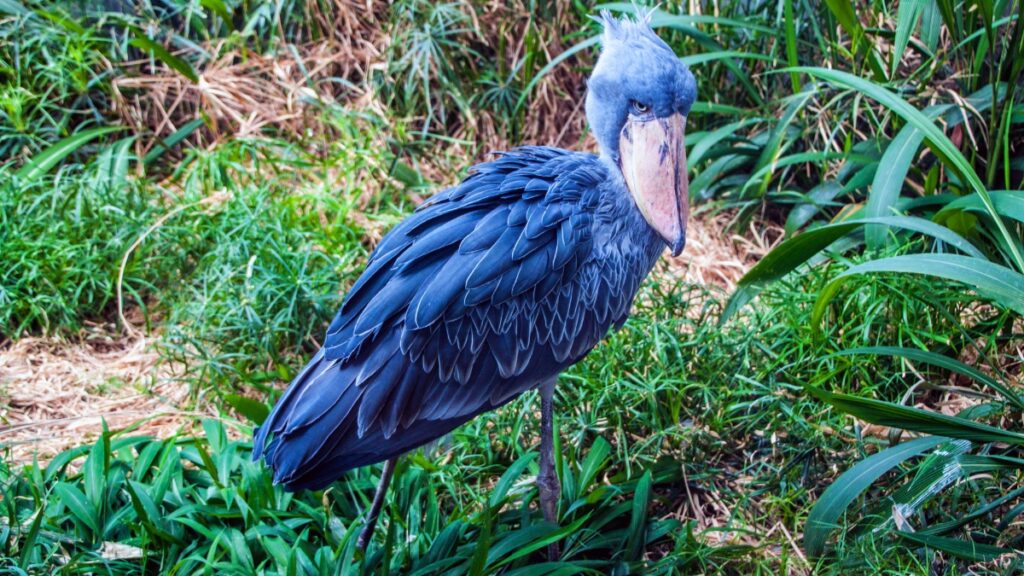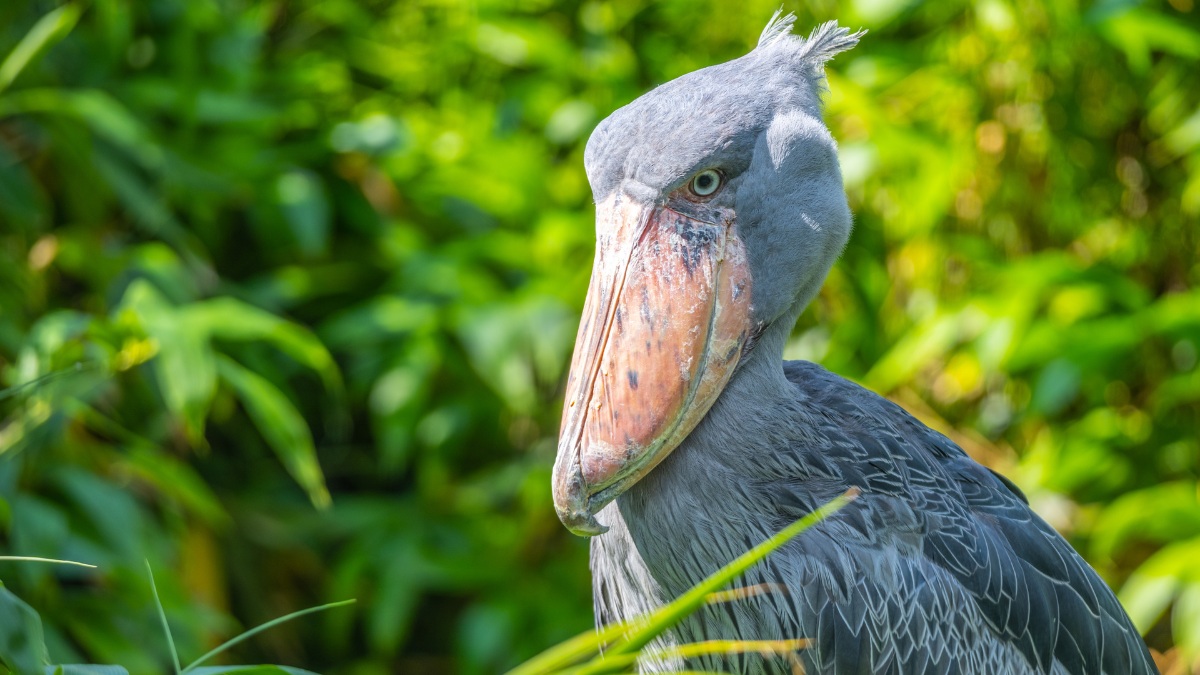The shoebill, a bird renowned for its distinctive and imposing appearance, has long fascinated bird enthusiasts and the general public alike. With its prehistoric-looking demeanor and an enormous, shoe-shaped bill, the shoebill is often referred to as the “king of the marshes.” However, given the various threats they face, a pressing question arises: Do shoebill birds still exist?
Contents
Classification and Appearance
To begin with, it is essential to understand the shoebill’s place in the avian world. The shoebill, scientifically known as Balaeniceps rex, belongs to the family Balaenicipitidae and the order Pelecaniformes. Despite its stork-like appearance, genetic evidence has definitively placed the shoebill in a lineage more closely related to pelicans and herons rather than storks.
The shoebill is an imposing bird, standing between 4 to 5 feet tall, with a wingspan of up to 8 feet. Its grey plumage, white belly, and tiny feathered crest on the back of its head are notable features. However, the most striking aspect of the shoebill is its massive bill, which can be between 9 and 12 inches long and is shaped like a Dutch clog. This bill is not only distinctive but also highly functional, equipped with sharp edges and a hook at the tip that allows the bird to grab, grip, and kill its prey.
Habitat and Distribution
Shoebills are found in the freshwater swamps and marshes of tropical East Africa, spanning from South Sudan to Zambia. They are most numerous in the West Nile sub-region and South Sudan, particularly in the Sudd, a vast wetland that serves as a main stronghold for the species. Other significant populations are found in Uganda, western Tanzania, and northern Zambia. More isolated records have been reported in Kenya, the Central African Republic, northern Cameroon, southwestern Ethiopia, and Malawi.
These birds prefer areas with deep water and a bed of floating vegetation, which is crucial for their hunting strategy. They thrive in environments with poorly oxygenated water, as this forces fish to surface more frequently, increasing the shoebill’s chances of successful capture.
Also Read: What is the Behavior of the Saiga Antelope?
Diet and Foraging

Shoebills are carnivores with a diverse diet that includes fish, frogs, water snakes, and even young crocodiles and Nile monitor lizards. Their favorite prey is the lungfish, a large and formidable catch that few other birds can manage. The shoebill’s unique bill is instrumental in this regard, allowing it to scoop up, stab, and decapitate its prey before consumption.
One of the most fascinating aspects of the shoebill’s behavior is its patience and stealth. These birds can stand motionless for hours, often described as having a “death stare,” waiting for the perfect moment to strike. When they do, it is with swift and powerful precision, a maneuver known as “a collapse,” where they plunge their bill into the water to ambush their prey.
Breeding and Social Behavior
Shoebills are solitary birds that maintain significant distances from each other, even during the breeding season. They form monogamous pairs, and both parents are involved in caring for the chicks. The breeding pairs construct large nests on floating vegetation, which can be up to 8 feet wide. Females lay up to three eggs, but typically only one chick survives to fledge due to the competitive nature of the siblings. The parents care for the young, feeding, guarding, and shading them until they become independent, which can take around 105 to 112 days. The young shoebills reach full sexual maturity at around three years of age.
Conservation Status
Despite their impressive adaptations and unique appearance, shoebills are facing significant threats to their survival. The species is classified as Vulnerable by the IUCN Red List, with estimates suggesting there are only between 3,300 and 8,000 individuals remaining in the wild. The population is declining due to several key factors:
- Habitat Destruction and Modification: Swamps are being drained for agriculture, and cattle grazing is damaging the delicate ecosystems that shoebills depend on.
- Hunting and Nest Disturbance: Shoebills are hunted, and their nests are often disturbed by humans, which can lead to the failure of breeding attempts.
- Illegal Live Bird Trade: Shoebills are captured and traded, both legally and illegally, resulting in high mortality rates during capture, transit, and captivity.
- Climate Change: Droughts caused by climate change are altering the habitats and reducing the availability of food for shoebills.
Conservation Efforts
Given the critical state of the shoebill population, several conservation efforts are underway to protect this unique species. Here are some of the key initiatives:
- Habitat Protection: Protecting the wetlands and swamps where shoebills live is crucial. In areas where habitats are safeguarded, shoebills have shown higher breeding success.
- Local Community Involvement: Local fishermen and communities are being engaged to guard shoebill nests and protect their habitats from poachers and other disturbances.
- Ecotourism: Ecotourism can provide an economic incentive for local communities to protect shoebill habitats. Bird enthusiasts and tourists are willing to pay to see these birds in their natural habitat, which can help in conserving the species.
Conclusion
In answer to the question, “Do shoebill birds still exist?” the answer is yes, but their existence is precarious. Despite their remarkable adaptations and unique appearance, shoebills are facing numerous threats that put their survival at risk. It is imperative that we continue and intensify conservation efforts to protect these birds and their habitats.
The shoebill’s story is a testament to the delicate balance of ecosystems and the impact of human activities on wildlife. By supporting habitat protection, engaging local communities, and promoting ecotourism, we can help ensure the continued existence of this extraordinary bird.
In the vast and often untouched wetlands of East Africa, the shoebill stands as a sentinel, a reminder of the beauty and diversity of nature. Let us act to preserve this natural wonder for future generations to marvel at and study. The shoebill’s survival is not just a matter of conservation; it is a reflection of our commitment to preserving the natural world.
